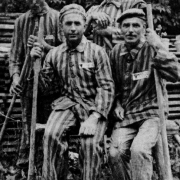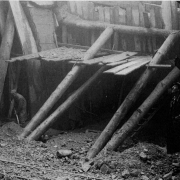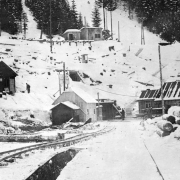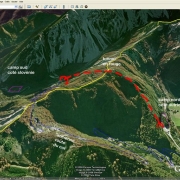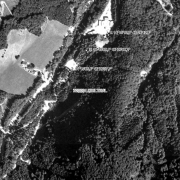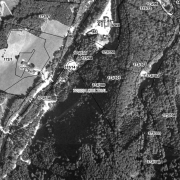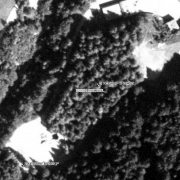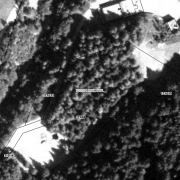Satellite Camp Loibl North
Gründung des Konzentrationslagers
The subcamp on the Austrian side of the Loibl mountain pass was established on 3 June 1943 and its set-up was completed in October 1943. At first, there was a makeshift camp for only few prisoners, and in the autumn, the barracks camp for hundreds of prisoners was completed.
Lokalisierung
The digging of the tunnel was done from both north and south at the same time. For this reason, the camps for the prisoners, the SS, and the civilian workers were set up near the tunnel entries.
Informationen über die Häftlinge
The largest group of prisoners at the Loiblpass camps were from France. The second-largest group was likely around 500 prisoners from Poland. There were also approx. 150 Russian, and 124 Yugoslavian prisoners and several smaller groups from other countries at the camp. Many of the French prisoners were categorised as “political” prisoners; approx. 30 to 40 German and Austrian prisoners were classified as “criminals”. In total, approx. 1,650 people were detained at the Loibl North and South Subcamps. The total number of 1,8000 prisoners is due to another approx. 60 prisoners from the hostage prison in Begunje, but their names are not in the records. Moreover, another 80 prisoners were forced to walk towards Loibl from Klagenfurt-Lendorf Subcamp in May 1945. In August 1944, the highest number of prisoners present at once was reached, with approx. 1,300 persons. Aside from the prisoners, the construction of the tunnel was also supported by civilian workers (740), among them 47 from Austria and Germany, 596 from Slovenia, 75 from Croatia, and 22 from Italy. Many of the Slovenian and Croatian workers were conscripted, and there were connections to partisans.
Zwangsarbeit
The prisoners were assigned to dig 1,542 metres of road tunnel. The construction of the tunnel proceeded quickly from the beginning. On 4 December 1943, the tunnel breakthrough was celebrated by Gauleiter (District Leader) Friedrich Rainer from Carinthia. To accelerate the completion of the tunnel, it was decided to forego the “usual safety precautions". The next year, the first military truck passed through the provisional tunnel. In autumn 1944, efforts were made to cease construction of the tunnel, but the works were continued until early May 1945. One of the reasons for this was the significance of the provisional tunnel for the retreat of the German Wehrmacht from the Balkans. The strenuous labour and the insufficient food supply made living and working conditions very harsh for the prisoners of the Loiblpass subcamps. Approx. 40 prisoners lost their lives there. After 26 documented escape attempts, 21 attempts ended up being successful thanks to the help of partisans and locals.
Bewachung
The guards of the Loiblpass subcamps were recruited from the 33rd SS/T.Sturmkompanie Mauthausen as well as from the local police. First commander was Julius Ludolph, who was replaced by SS-Obersturmführer (Senior Assault Leader) Jakob Winkler in late July 1943, after the civilian construction engineers had complained about Ludolph. Before that, SS-Hauptscharführer (Chief Squad Leader) Lemmen, and then SS-Oberscharführer (Senior Squad Leader) Paul Gruschwitz were in command. The senior staff of the state construction supervision and the “Universale Hoch- und Tiefbau AG” were all members of the NSDAP. There were several guard posts along the access roads towards Loiblpass. The guards brutally abused the prisoners.
Schließung
The official work detachment was held until May 1945. On 15 April 1945, the prisoners of Loibl North Subcamp were moved to Loibl South Subcamp due to the persisting partisan activities. Loibl North Subcamp was closed. German and Austrian prisoners were forced to put on SS uniforms.
Gedenken und Erinnern
The tunnel that had been almost completed by the prisoners was opened to traffic in 1967. In 1995, the Mauthausen Committee Carinthia/Koroška [1] erected a memorial plaque at the North entrance to the tunnel. In 2008, the Austrian ministry of the interior leased the former camp premises. The remaining foundations of the barracks, overrun with weeds, were cleared. In cooperation with the Mauthausen Committee Austria, the Mauthausen Committee Carinthia/Koroška organises commemoration and liberation celebrations every year in July. The relevant date can be found in the programme for commemoration and liberation ceremonies [2].

